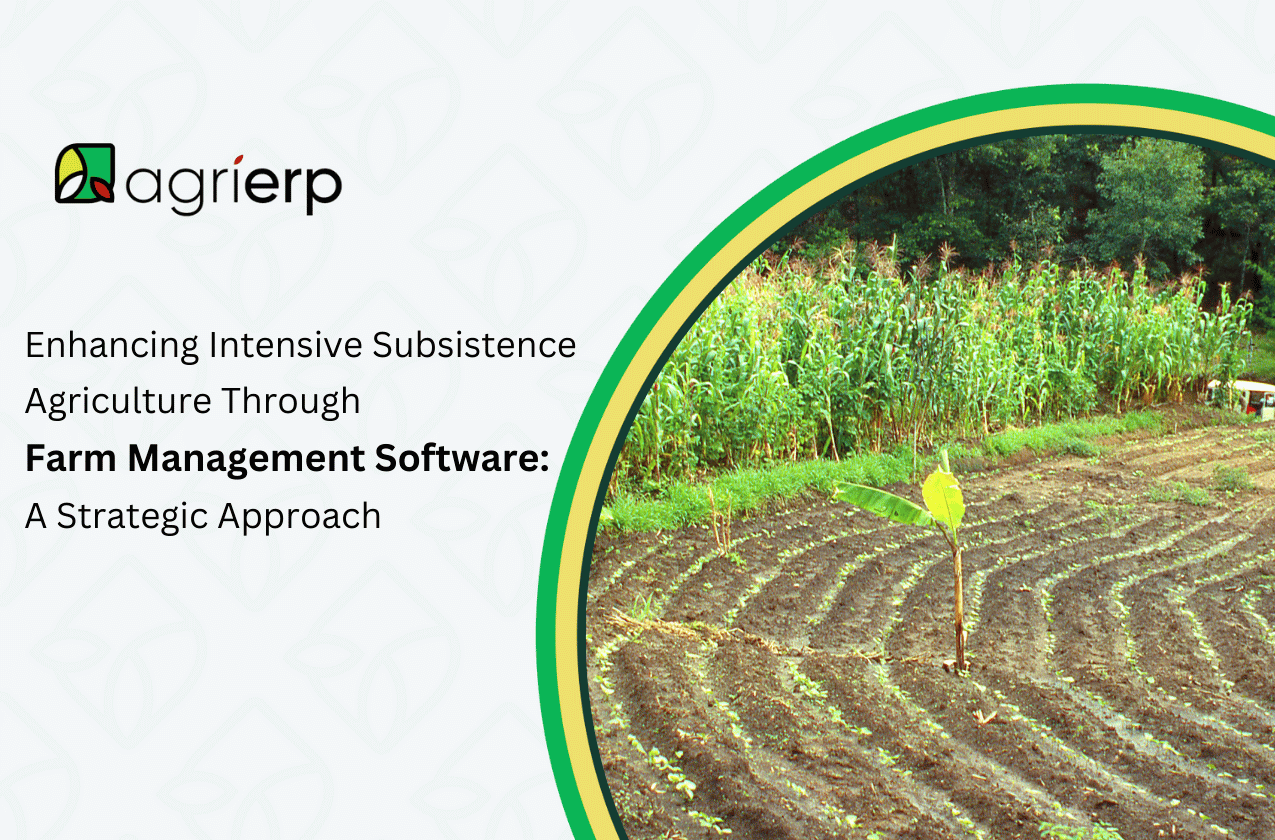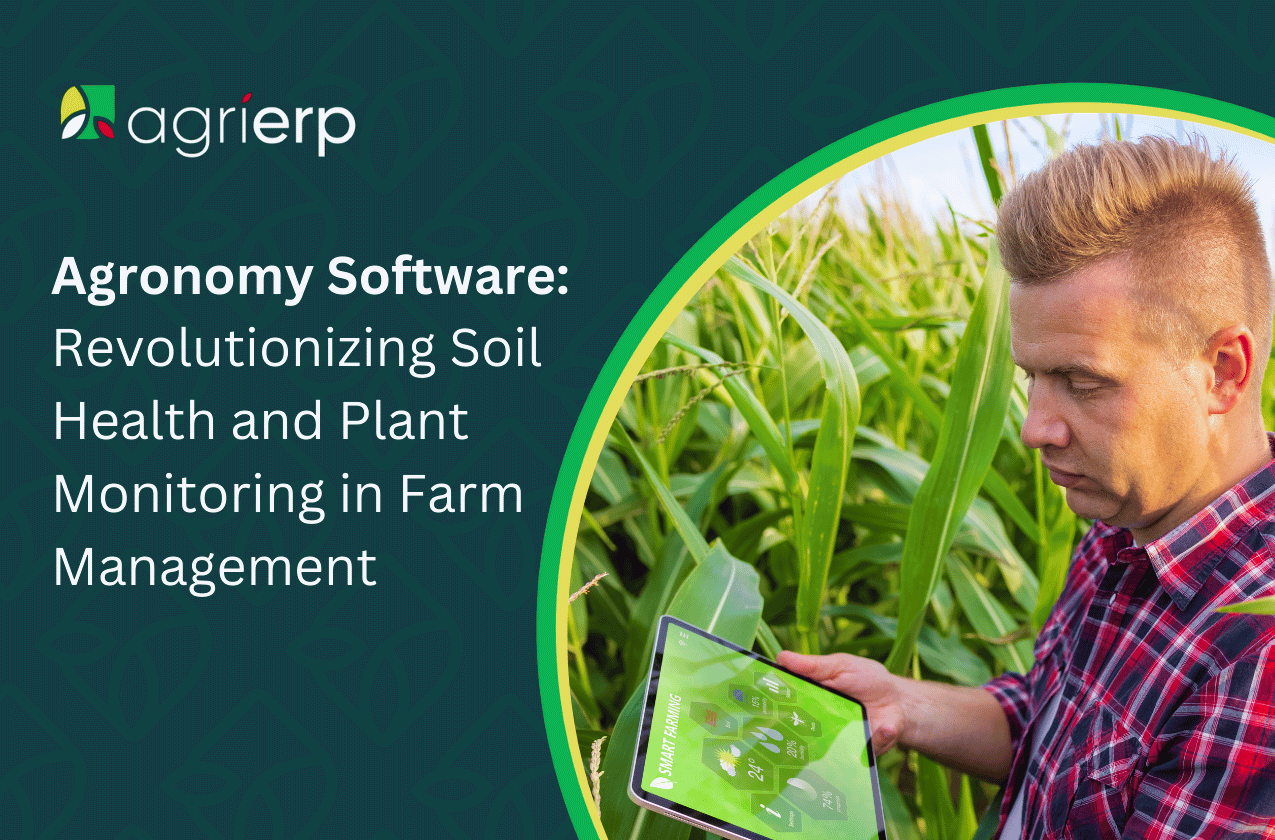Introduction
Intensive subsistence agriculture is an agricultural technique practiced by small-scale and family farms in underdeveloped countries. This method uses labor-intensive techniques and small plots of land and aims to maximize output from minimal resources.
However, many difficulties often stand in the way of this traditional approach, such as limited access to modern technology, environmental risks, and financial limitations.
In this article, we present farm management software. This powerful tool can transform traditional agricultural methods completely by adopting a comprehensive strategy to improve production and sustainability in intense subsistence farming.
Understanding Intensive Subsistence Agriculture
The main features of intense subsistence agriculture are small-scale land usage, high dependency on human labor, and intensive crop production for the farmer’s family with minimal surplus harvest for sale.
Farmers utilize all available resources to retain soil fertility, frequently growing many crops annually and engaging in crop rotation. This approach is essential for ensuring food security in many areas, but it is not without its difficulties.
Farmers engaged in intensive subsistence agriculture often struggle with limited access to advanced technology, making it difficult to improve their farming methods. They are also highly vulnerable to environmental changes, such as droughts and floods, which can threaten their crops and livelihoods.
Moreover, economic pressures, including varying market prices and limited access to credit, further complicate their efforts to survive and improve their farming processes.
The Role of Farm Management Software in Intensive Agriculture
An important factor in changing intense subsistence agriculture is farm management software. Here’s how:
Data-Driven Decisions
Farm management software provides important information that assists farmers in making intelligent decisions. By gathering and analyzing information regarding important parameters such as soil conditions, weather patterns, and crop performance, the software empowers farmers to plan their planting, fertilizing, and harvesting activities more efficiently.
This data-driven method guarantees farmers can utilize their inputs efficiently and maximize their harvests.
Resource Management
With limited availability of resources, their efficient management is mandatory in intensive subsistence agriculture. Farm management software helps farmers efficiently manage valuable resources such as water, soil nutrients, and seeds.
Farm management software boosts productivity and decreases waste by monitoring resource use and making recommendations. Accurate irrigation scheduling, for example, may guarantee that crops receive sufficient water at the right time to reduce water waste and enhance crop health.
Pest and Disease Control
Farm management Software can also help predict and reduce pest and disease outbreaks. The software can notify farmers about possible future threats and suggest preventive measures by constantly tracking crop health and environmental conditions. This capability is especially important in areas where farmers have limited access to pesticides and herbicides. Early intervention can save crops from damage and guarantee a reliable food supply for the farmer.
Benefits of Integrating Technology
Integrating farm management software into intensive subsistence agriculture offers immense benefits to the small scale farms:
Increased Productivity
Employing software to automate some farming tasks can increase crop yields and save time. More efficient handling of tasks like fertilization, irrigation, and pest control allows farmers to concentrate on other vital responsibilities. This automation results in better use of available resources and increased production.
Enhanced Sustainability
Better management of available resources leads to more sustainable farming practices. Farm management software helps reduce the environmental footprint of farming activities by optimizing the use of water, nutrients, and other inputs. Sustainable practices preserve the environment and ensure the long-term survival of farming operations.
Economic Advantages
Access to updated market information and smart farming operations may significantly enhance profitability. Farm management software can help farmers better plan their production to meet consumer demand, reduce waste, and raise profits. Better resource management also reduces expenses, which increases farmers’ revenue.
Implementation Strategies
To successfully implement and integrate farm management software into your farming operations, follow the steps listed below:
Step-by-Step Guide
1. Assess Your Needs
Begin by identifying the challenges you face in your farming practices and determine how farm management software can handle them.
2. Choose the Right Software
Conduct thorough research and choose farm management software that meets your requirements and budget. Select software with features such as data analysis, resource management, and pest control.
3. Train Your Team
Ensure that the team responsible for the farming operation understands how to use the software. Hands-on training can be provided by the software provider or local agricultural extension services to acquaint your employees with the software’s features and usage.
4. Start Small
To initiate the usage of the software, implement it on a small scale. Monitor the results and make modifications as needed before extending its usage.
5. Monitor and Adjust
Consistently monitor the performance of the software and make adjustments based on feedback and observed outcomes.
Overcoming Barriers
1. Cost:
Look for any financial aid or subsidies that might be offered to help install farm management software. Consider the productivity gains and long-term savings an investment.
2. Infrastructure:
Ensure you have the equipment required to support the software, such as reliable internet access and appropriate hardware.
3. Training:
Provide periodic training and support to ensure all users are comfortable with the software and can fully use its features. This will ensure that its implementation yields maximum benefitson.
Case Studies and Success Stories
Farm management software has been successfully implemented in intensive subsistence farming settings in many regions worldwide. For example, a small Southeast Asian community gained a 30% increase in crop yields after adopting farm management software. The software-assisted them in optimizing their planting schedules, managing water usage more efficiently, and controlling pest infestations more effectively.
In Africa, a small-scale farming business used farm management software to organize its operations and improve market access. By aligning its planting and harvesting activities, it could more accurately meet market demand and get better harvest prices. The software also provided valuable information on soil health and weather patterns, enabling it to make intelligent decisions.
Immediate and Long-Term Benefits
The short-term benefits of integrating farm management software include increased productivity and reduced waste. Over the long run, farmers can gain improved soil health, better resource management, and higher profitability. These advantages help boost the overall sustainability and strength of their farming operations.
Challenges and Considerations
Despite the apparent advantages, introducing new technology into traditionally simple settings has difficulties and constraints. They consist of the following:
Cultural Factors
In some communities, traditional farming practices are deeply rooted and considered part of culture and beliefs. Therefore, introducing new technologies requires sensitivity to these cultural factors and a willingness to work with local leaders and farmers to demonstrate the software’s benefits.
Economic Factors
The upfront costs associated with purchasing and deploying farm management software can be a major barrier for smallholder farmers. However, the initial expense can frequently be overcome by long-term financial gains. Farmers would require access to credit or financial support to help with these upfront expenses.
Educational Factors
Successful adoption of farm management software requires a certain level of technical knowledge. Education and training are important to ensure that farmers can effectively use the software and gain maximum benefits from its features.
Environmental Adaptation
One of the major challenges in implementing farm management software in intensive subsistence agriculture is adapting the technology in alliance with the local environmental conditions. Each region has unique climate conditions, trends, soil types, and ecological challenges.
Customizing the software to handle these particular conditions is mandatory for its effectiveness. Software providers need to collaborate with local agricultural experts and farmers to ensure the technology is customized to meet the specific region’s needs.
Connectivity Issues
Internet connectivity can be a major hurdle in many far and rural areas where intensive subsistence agriculture is practiced. Reliable and uninterrupted internet access is required to best use farm management software. This is especially important for those who rely on real-time data and cloud-based services. Solutions such as offline functionality and local data storage options can help reduce these issues, making the software more accessible to farmers in remote locations.
Conclusion
In several developing countries, intensive subsistence farming is still widely used and essential for ensuring food security. By modernizing their traditional approaches through the integration of farm management software, farmers may boost productivity, sustainability, and profitability.
Although smallholder and family farms face many barriers, this strategic approach provides achievable means to overcome them and support their growth in an increasingly competitive and complicated agricultural environment.
Explore more about farm management software solutions by
visiting us today. Interact with our expert technology providers or local agricultural extension services to discover how you can adapt these tools to boost your farming practices. Embed modern technology and innovation and take the first step towards a more productive and sustainable future for your farm!



